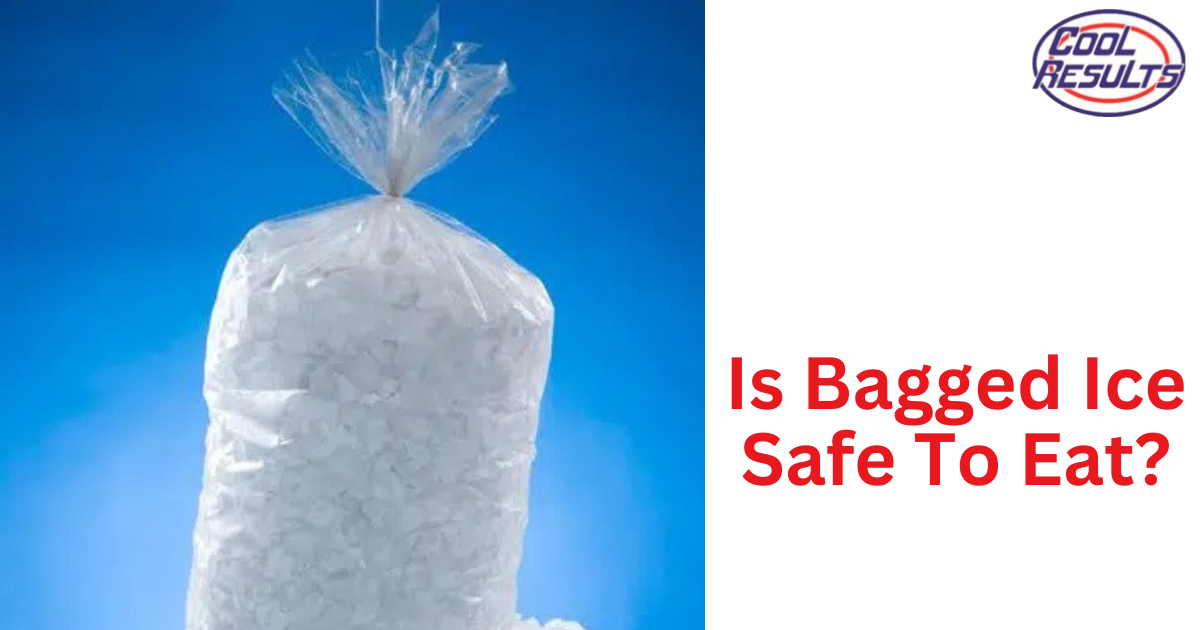In today’s busy lifestyle, people want convenience to concentrate on more important tasks. One such convenience is bagged ice cubes, which they can use instantly for their drinks. But have you ever thought: is bagged ice safe to put in drinks? In food safety, bagged ice has potential health impacts that are often underestimated. From manufacturing to storage, various factors can affect its safety.
Now, you’ll be wondering, does bagged ice go bad? Yes. Studies have shown that various foodborne bacteria, such as E. Coli and salmonella, can contaminate bagged ice. Eating contaminated ice can cause health impacts, including gastrointestinal discomfort and other severe ailments.
With that, this blog will guide you on: is bagged ice safe to eat.
Is Ice A Food?
The question of whether ice is considered food remains a debate. Ice is not considered food by itself because it lacks nutritional value. However, when used in cold drinks, ice creams, and smoothies, it plays a versatile role in food preservation and flavor enhancement.
While ice may not fulfill the criteria of typical food, its utility, and necessity in the culinary industry, ice surpasses the mere nutritional analysis, and thus, ice is food.
How To Buy Ice?
1. Assess Your Needs: Consider your requirements before going to an ice bag gas station. Do you need it for a single-day event or to store for an extended period? Determining the quantity and duration of use will help you choose the appropriate type and quantity of ice.
2. Explore Ice Varieties: Ice comes in various forms, each suited to different purposes. Cubed ice is versatile and ideal for chilling drinks, while crushed ice is perfect for blending into cocktails or filling coolers. Specialty ice, such as block or dry ice, serves specific functions like ice sculptures or extended cooling.
3. Check Packaging: Inspect the packaging for signs of damage or tampering. Ensure the bag is securely sealed and free from punctures, which can compromise the quality and safety of the ice. Opt for ice bags with sturdy handles for easy transport.
4. Examine Ice Quality: Quality is crucial when purchasing bagged ice. Look for clear and free ice from impurities, as cloudy ice may indicate a lower quality or improper storage. Additionally, avoid ice with a strong odor, as it may have absorbed undesirable flavors from the environment.
5. Consider Convenience: Choose the size and shape of ice that best suits your needs and preferences. Larger ice cubes melt more slowly, making them ideal for prolonged cooling, while smaller cubes offer faster beverage chilling.
6. Plan for Transport: If traveling significantly or storing ice for an extended period, consider investing in a cooler or insulated bag to maintain its temperature. Pre-chilling the cooler can also help prolong the lifespan of the ice.
7. Verify Safety: Ensure the ice has been produced and handled in compliance with food safety regulations. Look for reputable brands and facilities that adhere to sanitary practices to minimize the risk of contamination.
Is Bagged Ice Safe To Eat?
Packaged ice can be safe to eat if it’s produced and handled properly. However, ensuring its safety requires careful consideration of several factors. Firstly, purchasing ice from reputable gas stations that sell ice is essential, as well as adhering to food safety regulations.
Inspect the packaging for any signs of damage or tampering, as compromised packaging can lead to contamination. Foodborne bacteria such as E. coli and salmonella affect ice quality. People say these bacteria will die in chill temperatures, but they can also survive well in these freezing temperatures.
Additionally, check the ice for clarity and absence of odor, as cloudy or foul-smelling ice may indicate impurities or improper storage. Bagged ice should be stored at temperatures below 0°C (32°F) to prevent bacterial growth. While bagged ice is typically intended for chilling rather than consumption, if you choose to consume it, be mindful of the risks associated with ingesting ice, such as choking hazards and potential contamination from handling.
Overall, while bagged ice can be safe to eat, exercising caution and purchasing from reputable sources are crucial steps to ensure its safety.
At Cool Results, we promptly take care of your commercial refrigerators repair and freezers, ensuring you get your ice cubes uninterruptedly.

